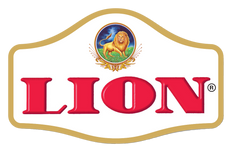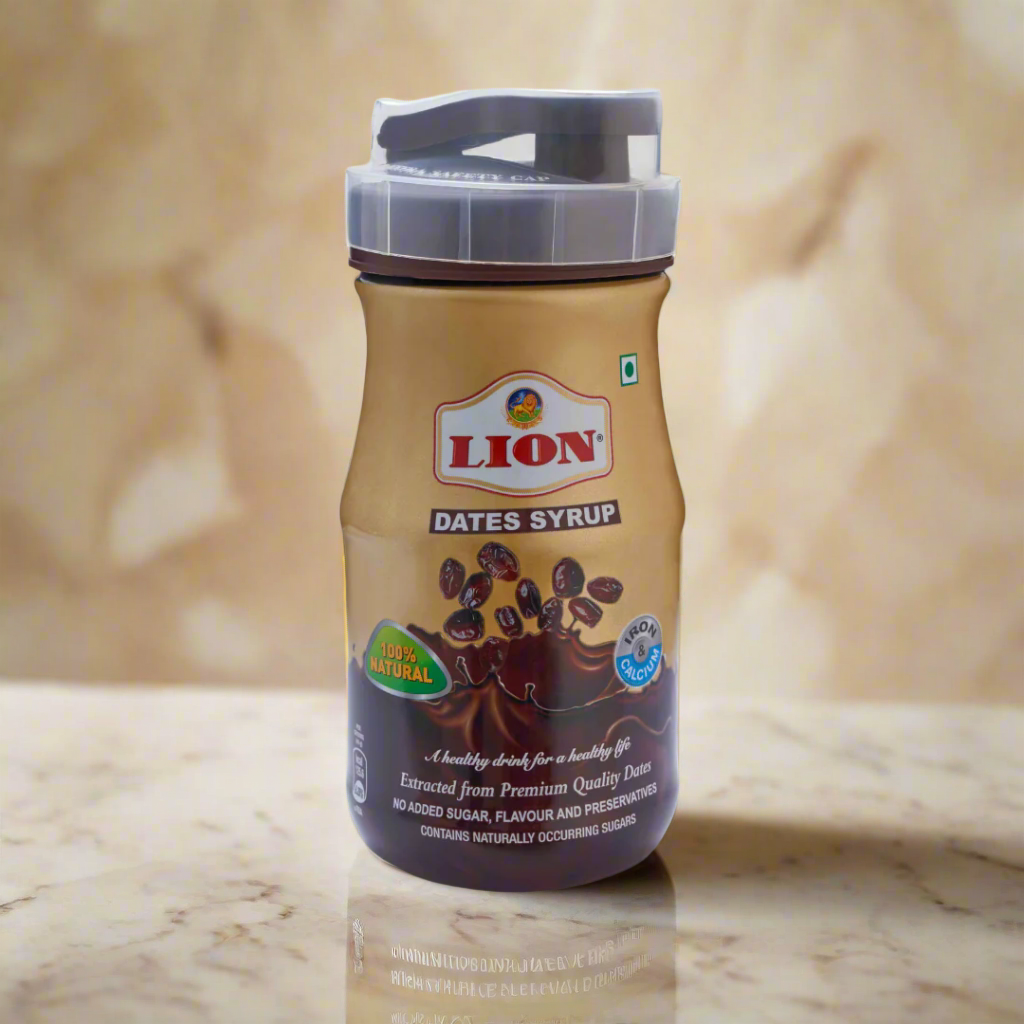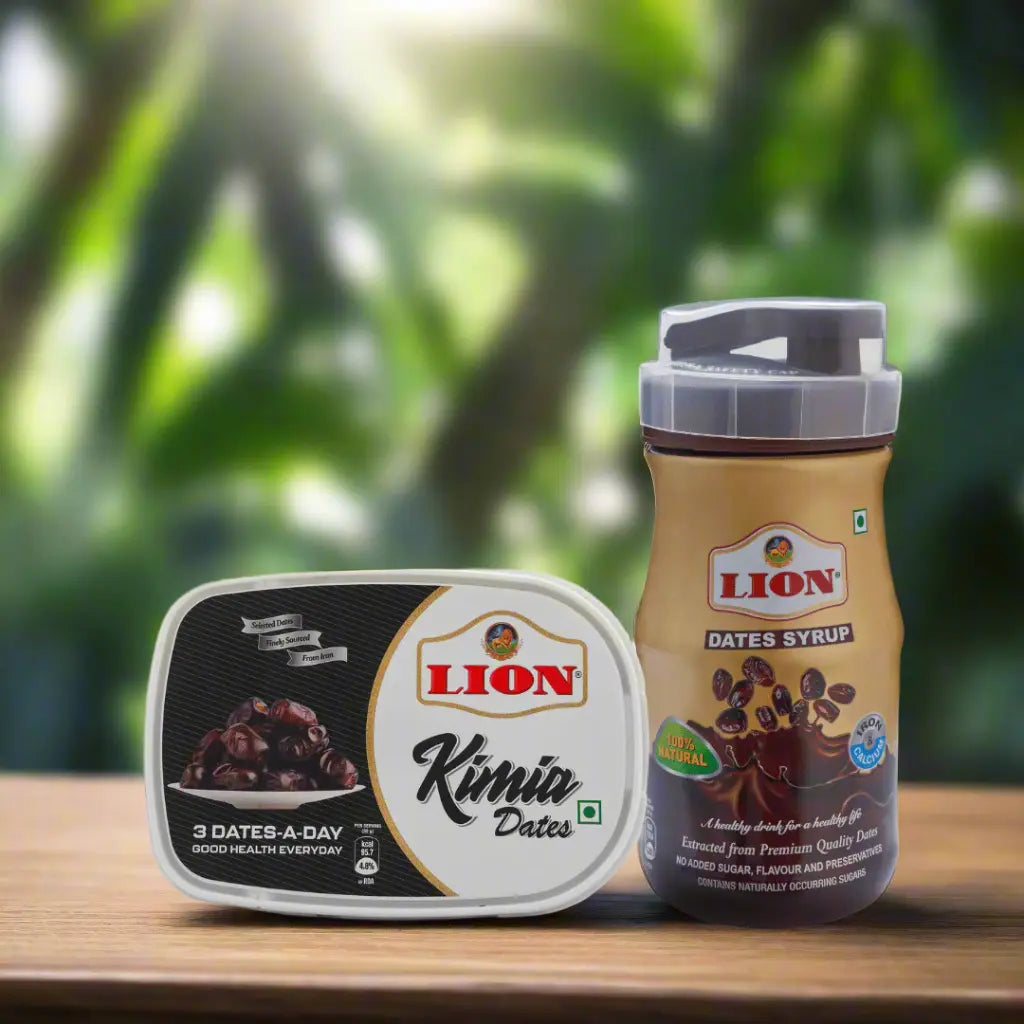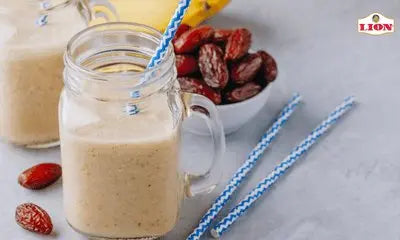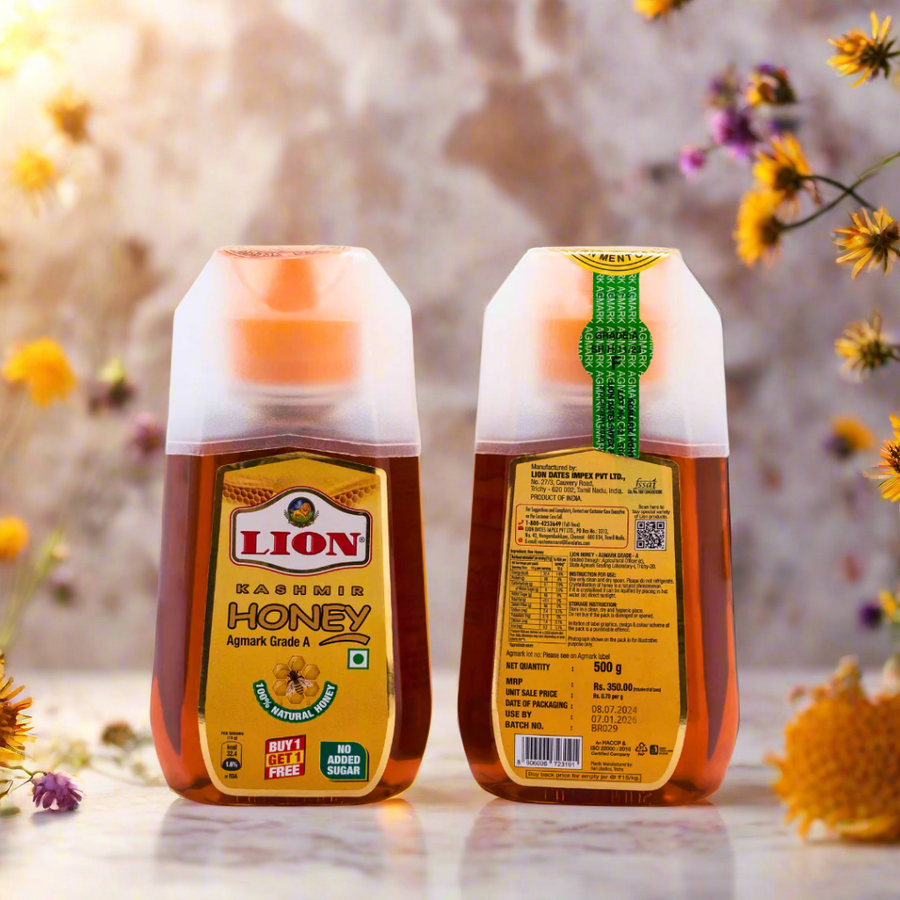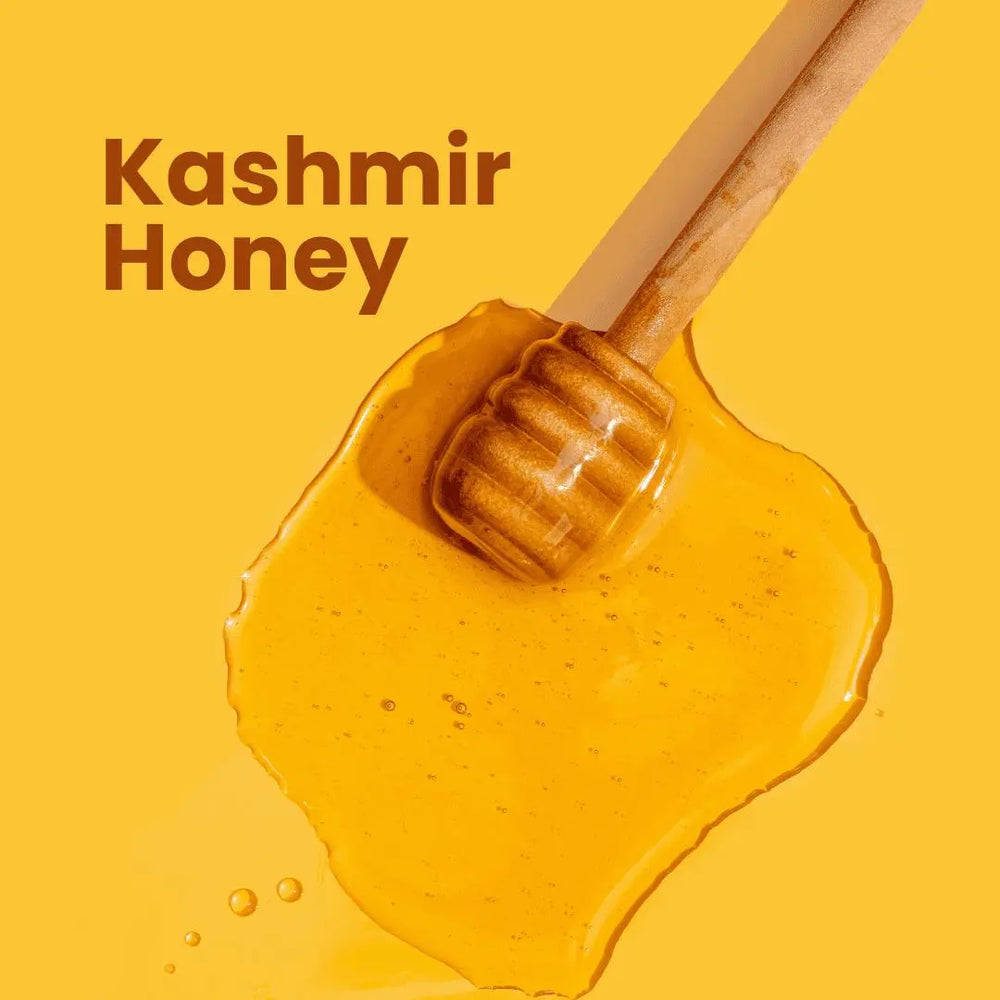Is your Honey's quality Pure or Poor? | Lion Dates
When it comes to thinking of something sweet, honey has always been a constant on the list. Honey can be a perfect substitute for refined sugar, which is only a source of useless calories. This delightful natural substance may not only sweeten your life, but it is also high in minerals, nutrients, and live enzymes. If you wish to reap the benefits of honey, you should consider its purity before purchasing. It can be difficult to find nice, pure honey. Let’s test it out once and for all.
So, Are you ready to find the difference between genuine and fake honey? Test it at home to find out the truth. Here are some simple methods for determining the purity of honey and identifying contaminated honey.
The classic water test method
This is the most common and well-known technique for checking if your honey is pure honey. Take a teaspoon of honey and pour it into a glass of water. Pure honey has a denser texture and thus settles at the bottom of the glass as lumps, which will dissolve in water while counterfeit or adulterated honey will not. The same can be said for blotting paper or a white cloth. Pouring pure honey on the two will not soak or leave stains.
The thumb rule to find pure honey
Test a small bit of honey on your thumb to see if it spills or spreads like any other liquid. If it does, it is possible that it is not pure. Pure honey is thick, but impure honey is watery. Pure honey adheres to the surface on which it is applied and does not leak away. Furthermore, due to the presence of additional sugar, the flavour of impure honey may persist.
The lit flame test
This test can be quite risky. It is the flame test. You might not have guessed it, but pure honey is volatile. Hence, we will recommend that you use extreme caution and do this test at your own risk. Using a dry matchstick, dip it in honey. Make a strike with the matchstick against the matchbox. If it glows, it means your honey is pure. If it doesn't light, it could be contaminated, and it could possibly have some moisture added. So, to conclude natural honey gets lit.
The wise vinegar test
A vinegar and honey mixture can be used to distinguish between pure honey and counterfeit honey. To get started with this test, add a few drops of honey to a vinegar-water combination. If the combination begins to foam, this could indicate that the honey's quality has been tainted.
The heat test
When pure honey is heated, it caramelises quickly and does not froth. However, if the honey is impure, it may not caramelise and become bubbly when heated.
Bonus points
Pure honey will not crystallise when refrigerated. You'll see that it stays in a liquid form the entire time. Adulterated honey, on the other hand, will solidify and crystallise.
To conclude with
Alas! One more thing that could help you identify if your honey is pure or poor is that you can notice that a white layer of sugar is separated and formed on top of the impure honey when you refrigerate your honey.
Just in case you are looking for bee honey that is pure and extracted from the bee farm and completely unadulterated, check out Lion Dates Kashmir Honey.

